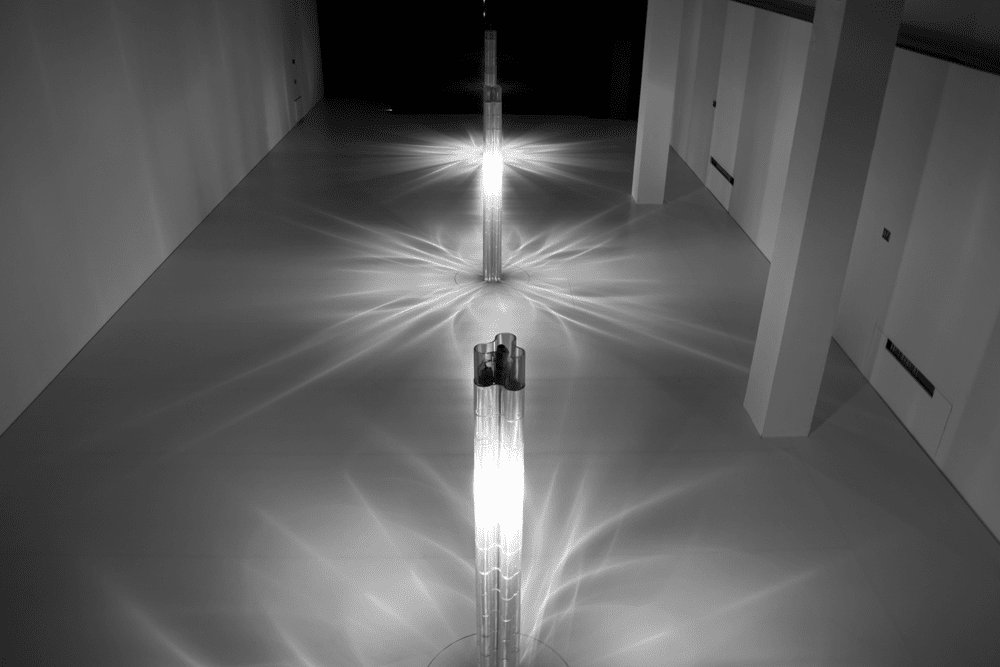[ihc-hide-content ihc_mb_type=”show” ihc_mb_who=”reg” ihc_mb_template=”3″ ]
[vc_row][vc_column][vc_column_text]
Now, in the latest volume of 3D Printing and Additive Manufacturing journal, Chikara Inamura, Michael Stern, Daniel Lizardo, Peter Houk, and Neri Oxman present their findings from this design week experiment, and discuss the development of the G3DP2 platform.
Full control over the optical and mechanical properties of glass
In August 2015, the Mediated Matter Group at MIT unveiled the early stages of its pursuit to 3D printed optically clear glass. A significant challenge due to the inherent layers in extrusion-based 3D printing, this project (known as GLASS I or G3DP) produced a collection of artful lamps capable of refracting light.[/vc_column_text][vc_column_text]

Though no bigger than an average lampshade or vase, GLASS I objects served as the foundation for the team’s ambitious project: to ultimately control the “optical and mechanical properties” of glass “at high spatial manufacturing resolution.”
G3DP2, or GLASS II, is a progress update on the group’s efforts in 3D printed glass. Not only has this technique now been achieved at scale, but the team have also created a new, more sophisticated system for its realization.
(3D printed) GLASS II
In the process of developing G3DP/GLASS I, the MIT research team experienced challenges due to wetting, i.e. molten glass sticking the exterior face of the nozzle. As such, the main focus of G3DP2/GLASS II was to eradicate this problem. In the first instance “To decrease the impact of wetting, the geometry of nozzle tip angle was increased from 30° to 45° to reduce the contact surface area with the molten glass.” Rather than ceramic, the researchers stipulate that the nozzle was also machined from solid alumina.
A number of other improvements were also made to the system’s motion control, including experimentation with four-axis. The glass installation for Milan Design Week 2017 however was produced using a three-axis G3DP2 machine.[/vc_column_text][vc_single_image image=”5117″ img_size=”full” add_caption=”yes”][vc_column_text]Glass as an architectural material
Though an assembly of multiple smaller segments, the group’s 3D printed 3m tall columns present an illuminating step forward for the team. As stated in the study’s conclusion, “The installation presented here demonstrates the potential of this AM technology to produce freestanding glass structures for the first time at architectural scale,”
“The set of 3-m-tall glass columns manifests their own structural integrity afforded by the novelty and capability of the new manufacturing platform.”
One of the real-world applications of such structures is “glass tubes simultaneously act as an heating, ventilation, and air conditioning (HVAC) system,” a feature that the researcher believe would embody “the fundamental shift in the notion of glass in architecture from human centric toward a symbiosis between human, inhuman, and the built environment.”[/vc_column_text][/vc_column][/vc_row]
Source: www.3dprintingindustry.com
[/ihc-hide-content]
The AM Chronicle Editorial Team is a collective of passionate individuals committed to delivering insightful, accurate and engaging stories to additive manufacturing audiences worldwide.



